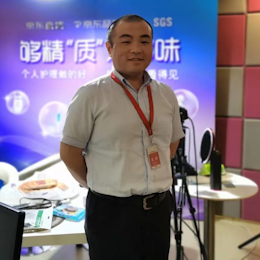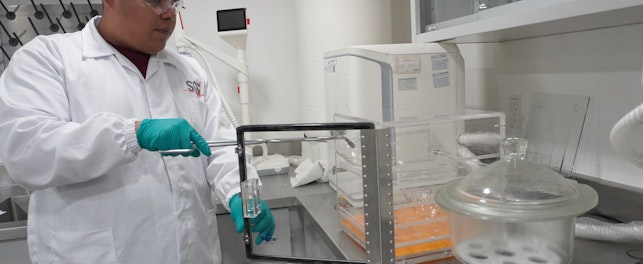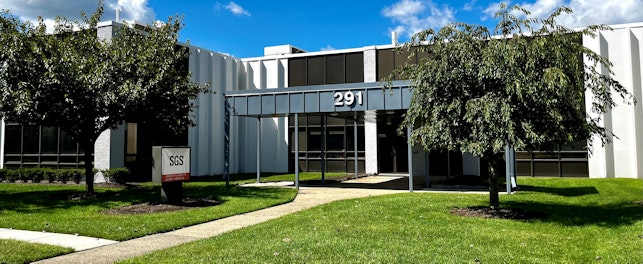Consumers are more aware than ever of the importance of good indoor air quality. We look at how SGS has partnered with Japanese electrical company Panasonic to test and certify its next generation of nanoe™ X technology enhanced air conditioning units.
Changing concerns about air quality
Prior to COVID-19, most consumers thought about internal air quality in terms of keeping poor quality external air from entering their building. This changed with the pandemic. The risk of airborne transmission of the SARS-Cov-2 virus through aerosols meant we all became cognizant of the importance of air quality in terms of agents such as bacteria, viruses, odors, allergens and pollen.
Indoor air quality has therefore become a health and safety consideration. Businesses and organizations that require large groups of people to congregate in one enclosed place now need to proactively consider air quality or risk a reduction in their viability.
Air quality matters
The American Lung Association estimates the average adult male consumes 2,000 gallons (roughly 9,092 liters) of air a day – ten times what we consume in food and water1. If that air is poor quality, it can lead to headaches, fatigue, allergic reactions, sinusitis, respiratory issues, eye irritation and asthma. Indoor air must therefore be clean, clear and low in bacteria and viruses.
Good indoor air quality also helps to keep rooms cleaner and fresher. By removing gaseous impurities and pollutants such as smoke, pollen and dust from the atmosphere, we can ensure they do not adhere to surfaces and penetrate fabrics.
The traditional solution of opening a window may not always be sufficient or practical – it may be too cold outside or there could be smoke or smog. When this happens, consumers need to access an air quality system that does more than simply circulate air. Instead, it must also have the ability to remove particulates, odors, viruses, bacteria, etc.
This problem becomes even more difficult to solve if the room with poor quality air is large.
Hydroxyl radicals
Hydroxyl radicals are molecules that readily react and capture elements like hydrogen. Hydroxyl radicals therefore have the potential to inhibit the activity of pollutants, breaking them down and neutralizing their unpleasant effects. They are, in effect, nature’s detergent.
However, hydroxyl radicals are inherently unstable and have a lifespan of less than one second. It has therefore been impossible to use this naturally occurring process indoors… until now.
nanoe™ X
Panasonic has now found a way to utilize hydroxyl radicals in air quality systems. Its nanoe™ X technology collects invisible moisture that is present in the air and then applies a high voltage to it to release the hydroxyl radicals.
Using this process, the lifespan and therefore effectiveness of the hydroxyl radical is significantly extended – from less than a second to around 10 minutes2. This means the hydroxyl radical’s ability to inhibit bacteria, viruses, molds, allergens, pollens, odors and other substances can now be effectively utilized in larger areas.
The hydroxyl radicals contained in the moisture generated by nanoe™ X are also very small – 5~20nm. This means they can easily penetrate deeply into fabrics within a room to help deodorize them.
Because nanoe™ X technology uses a natural process to clean and deodorize, it is safe, effective and does not require the spreading of harmful chemical particles across a room.
SGS testing solution
When Panasonic needed a TIC company to identify and certify its nanoe™ X equipped air conditioning units, they chose SGS. We have been at the forefront of performance testing and certification for air cleaners and antivirus products for several years and our experts actively support IEC in standardization for air cleaners.
Testing air quality systems and their ability to inhibit viruses and remove odors in large public areas meant the creation of a special new test environment. To ensure data accuracy, this needed to conform to 32 strict test requirements.
We then used recognized test protocols relating to Escherichia coli bacteriophage MS2 to test the technology’s virus inhibiting capabilities. Phage cloth strips were placed in the appointed positions within the 52m2/139m3 test room. Once the air conditioning unit was turned on, these strips were subjected to observation over a number of time slots. The results were then compared to natural reduction. It was shown that nanoe™ X effectively inhibited 98.81% of viruses on surfaces.
The same nanoe™ X air conditioning configuration was also used to evaluate odor removing capabilities, with a control being set up using the same room configuration, temperature and humidity. Seven assessors with the required olfactory skills then scored the resulting room smells after 30 minutes. The results showed the room using nanoe™ X technology was 1.7 levels different to the control, leading to the conclusion that nanoe™ X was more effective at removing difficult odors.
Working in collaboration with Panasonic on its new nanoe™ X technology represents a step forward in air quality and anti-virus testing for SGS. We’ve been able to break new ground in terms of testing large areas, creating effective solutions that allow companies to demonstrate the efficacy of their equipment for large public areas.
Enjoyed this article?
Find more news and updates in our Consumer Compact newsletter >
Delivered direct to your inbox
Subscribe to Consumer Compact >
References
1 How Your Lungs Get the Job Done | American Lung Association
2 How nanoe™ X works | All about nanoe™ X | nanoe™ X | Air Conditioner | Panasonic
© SGS Société Générale de Surveillance SA.





